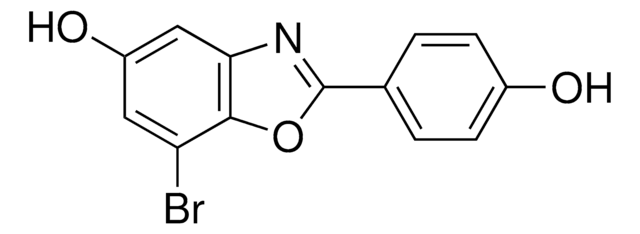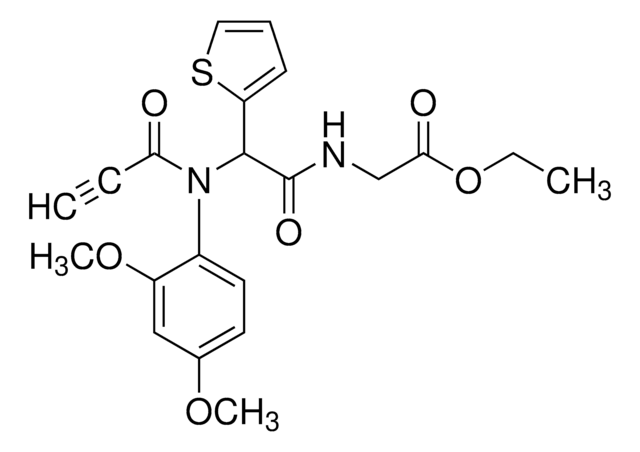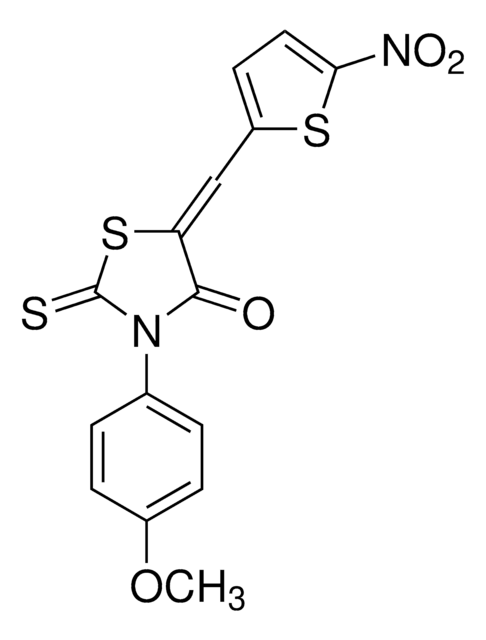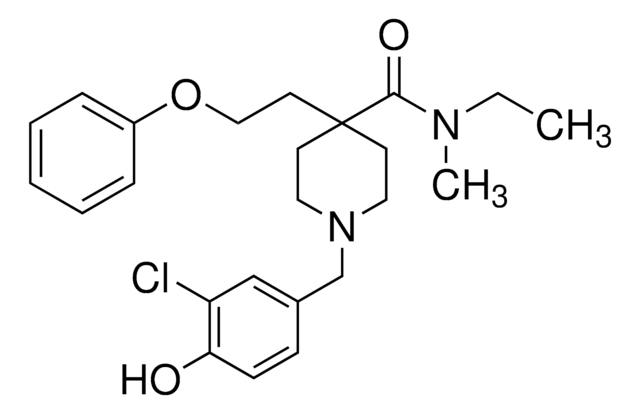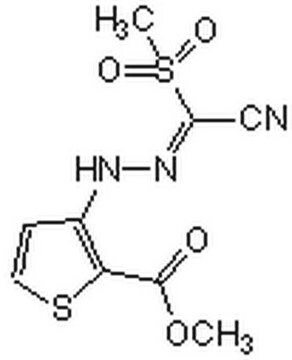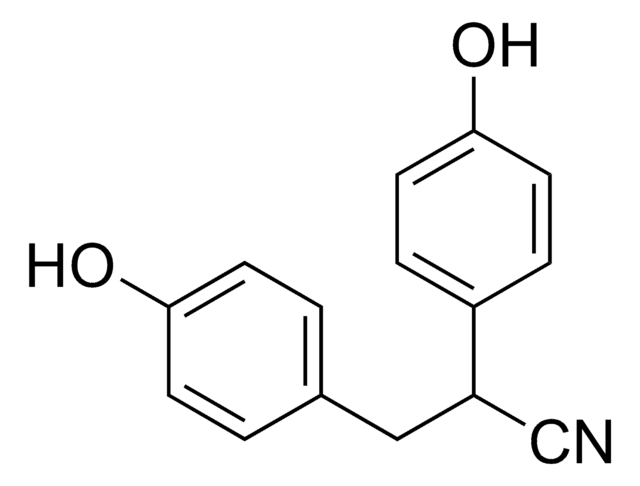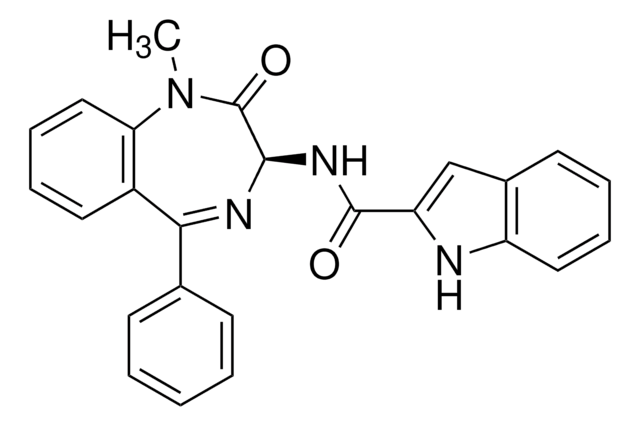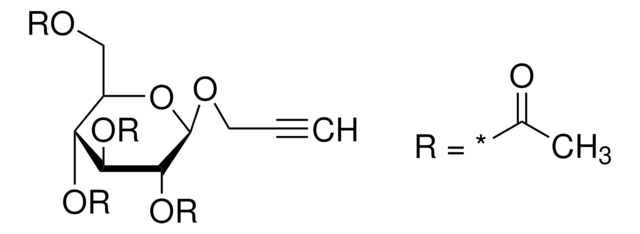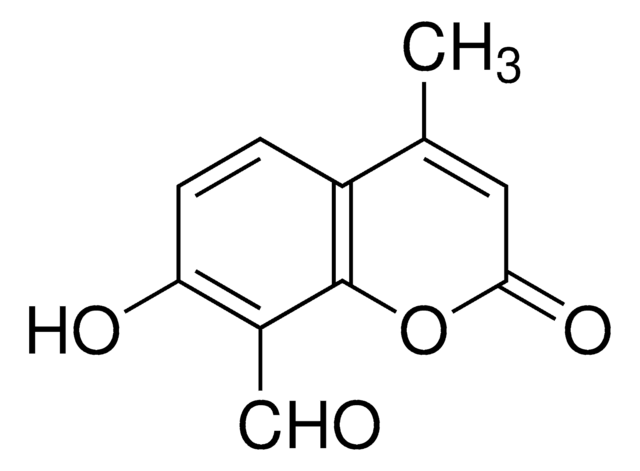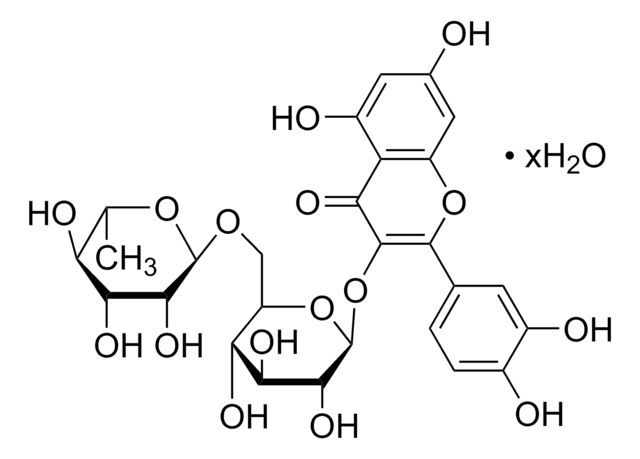SML0021
PDI inhibitor 16F16
≥98% (HPLC)
동의어(들):
2-(2-Chloroacetyl)-2,3,4,9-tetrahydro-1-methyl-1H-pyrido[3,4-b]indole-1-carboxylic acid methyl ester, Methyl 2-(2-chloroacetyl)-1-methyl-2,3,4,9-tetrahydro-1H-pyrido[3,4-b]indole-1-carboxylate
로그인조직 및 계약 가격 보기
모든 사진(1)
About This Item
실험식(Hill 표기법):
C16H17ClN2O3
CAS Number:
Molecular Weight:
320.77
MDL number:
UNSPSC 코드:
12352200
PubChem Substance ID:
NACRES:
NA.77
추천 제품
Quality Level
분석
≥98% (HPLC)
양식
powder
색상
white to tan
solubility
DMSO: 12 mg/mL, clear
저장 온도
2-8°C
SMILES string
COC(=O)C1(C)N(CCc2c1[nH]c3ccccc23)C(=O)CCl
InChI
1S/C16H17ClN2O3/c1-16(15(21)22-2)14-11(7-8-19(16)13(20)9-17)10-5-3-4-6-12(10)18-14/h3-6,18H,7-9H2,1-2H3
InChI key
BCSIRYFYAKLJDK-UHFFFAOYSA-N
애플리케이션
PDI inhibitor 16F16 has been used to inhibit PDI (protein disulfide isomerase) function to examine the functional conservation of PDIs in human embryonic kidney cells.
PDI inhibitor 16F16 may be used in protein disulfide isomerase-mediated cell signaling studies.
생화학적/생리학적 작용
16F16 is a protein disulfide isomerase (PDI) inhibitor, first identified in a screen for compounds that prevent apoptosis induced by mutant huntingtin protein. 16F16 not only suppressed apoptosis induced by the misfolded protein mutant hungtingtin, it also protected rat neurons from cell death triggered by Aβ peptide. The actions of this inhibitor helped to identify a new mechanism in which a cell death pathway is regulated by protein misfolding via PDI upregulation.
Storage Class Code
11 - Combustible Solids
WGK
WGK 3
Flash Point (°F)
Not applicable
Flash Point (°C)
Not applicable
가장 최신 버전 중 하나를 선택하세요:
이미 열람한 고객
A Protein Disulfide Isomerase Controls Neuronal Migration through Regulation of Wnt Secretion
Torpe N, et al.
Cell Reports, 26(12), 3183-3190 (2019)
Suma Yarapureddy et al.
Neoplasia (New York, N.Y.), 21(6), 516-532 (2019-04-28)
Patients with metastatic or relapsed/refractory osteosarcoma (OS) have a 5-year survival rate of <30%. This has remained unchanged over several decades. One of the factors contributing to lack of improvement in survival is the development of chemoresistance. Hence, elucidating and
Yuanjie Yu et al.
Thrombosis and haemostasis, 118(6), 990-1000 (2018-04-22)
Tissue factor (TF) can be present in a non-coagulant and coagulant form. Whether the coagulant activity is affected by the plasma membrane microenvironment is unexplored. This article studies the presence and coagulant activity of human TF in plasma membrane micro-domains.
Nanna Torpe et al.
Cell reports, 26(12), 3183-3190 (2019-03-21)
Appropriate Wnt morphogen secretion is required to control animal development and homeostasis. Although correct Wnt globular structure is essential for secretion, proteins that directly mediate Wnt folding and maturation remain uncharacterized. Here, we report that protein disulfide isomerase-1 (PDI-1), a protein-folding
Yuanyuan Yan et al.
Cell death and differentiation, 29(9), 1769-1789 (2022-03-19)
Hypoxic tumor microenvironment (TME) plays critical roles in induction of cancer stem cell-like phenotype in breast cancer and contribute to chemoresistance. However, the mechanism underlying stemness reprogramming of breast cancer cells (BCs) by hypoxic TME remains largely unknown. In the
자사의 과학자팀은 생명 과학, 재료 과학, 화학 합성, 크로마토그래피, 분석 및 기타 많은 영역을 포함한 모든 과학 분야에 경험이 있습니다..
고객지원팀으로 연락바랍니다.